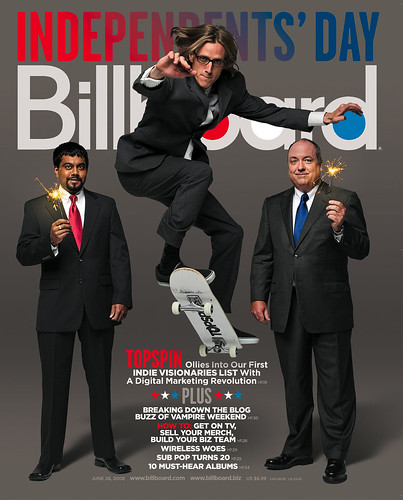 Since early 2006, everyone from Keith Richards to the garage band down the street has been selling albums through iTunes and other digital music stores through TuneCore for under $30 per year. Trent Reznor famously used it to put the 36-song Ghosts I-IV on sale for a mere 38 bucks.
Since early 2006, everyone from Keith Richards to the garage band down the street has been selling albums through iTunes and other digital music stores through TuneCore for under $30 per year. Trent Reznor famously used it to put the 36-song Ghosts I-IV on sale for a mere 38 bucks.
Now, the company has announced that it will distribute singles to seven digital music stores for a new flat rate: $10.
Anyone can use TuneCore to distribute a single song to iTunes (Australia/New Zealand, Canada, Europe, Japan, the United Kingdom and the United States), AmazonMP3, eMusic, Napster, Rhapsody, LaLa, and Groupie Tunes. The company plans to add Amie Street and Shockhound to its distribution network soon.
The stores have never rejected a single TuneCore track, according to TuneCore CEO Jeff Price, although it cannot categorically guarantee that iTunes and the rest will stock a particular track. "TuneCore changes the formats for each individual store," said a Tunecore spokesman via e-mail, and its submissions "are always technically up to snuff."
Digital music stores like nothing more than to trumpet statistics about how many millions of songs their catalogs include, so they have ample motivation to sort through the submissions. According to the spokesman, "the stores do not reject selling an album based on an editorial decision."
As usual, artists who upload their music to TuneCore retain all --as in 100 percent -- of revenue and rights to their music. TuneCore takes only that initial fee of $10 per song (album pricing is still available), bringing in extra money on the side by advertising stuff like mixing and mastering services to musicians.
Many of the most innovative ideas in music came from outside the music industry, but this one came from within. Jeff Price, who runs TuneCore, formerly ran the SpinArt record label (Creeper Lagoon, Elf Power, KaitO, The Lilys, Pixies, Wedding Present and many others).
Assuming iTunes and the other stores manage to give keep up with the flow of new music coming at them, TuneCore is a dream come true for artists -- and a nightmare for traditional labels and distributors. Now that it distributes single songs for such a low flat fee, there's even less of a barrier between bands and their potential customers.






 There's a lot of hype about widgets and dozens of new companies promoting their solutions, but
There's a lot of hype about widgets and dozens of new companies promoting their solutions, but 

 FACEBOOK STATUS NEXT
FACEBOOK STATUS NEXT Apple today announced that is has sold more than five billion downloads on iTunes. The online store remains the #1 music retailer in the US* and claims a catalog of over eight million songs. Customers are also renting and purchasing over 50,000 movies daily, making iTunes the world's most popular online movie store according to Apple.
Apple today announced that is has sold more than five billion downloads on iTunes. The online store remains the #1 music retailer in the US* and claims a catalog of over eight million songs. Customers are also renting and purchasing over 50,000 movies daily, making iTunes the world's most popular online movie store according to Apple.












